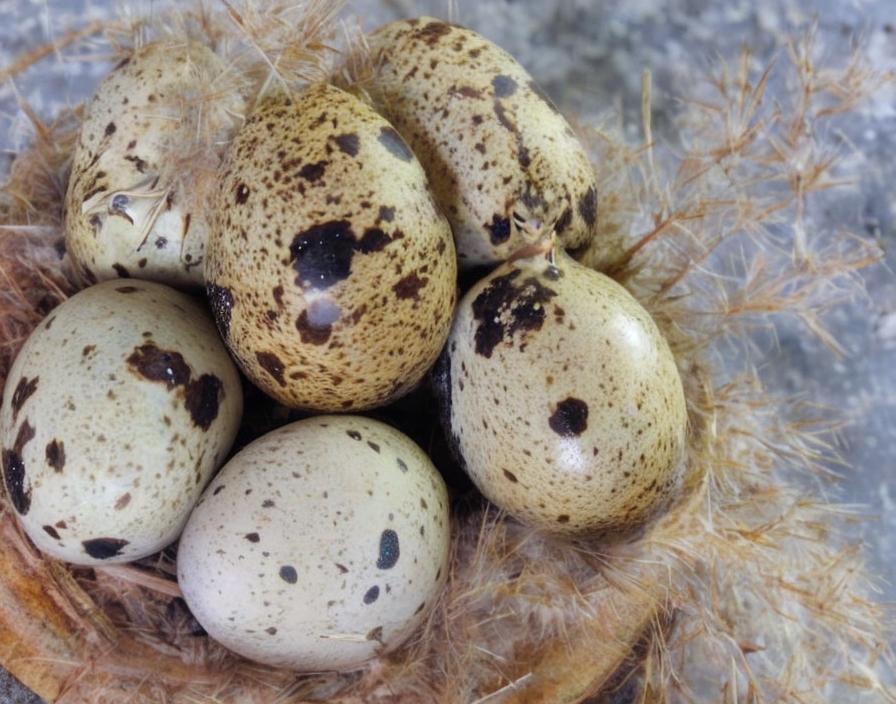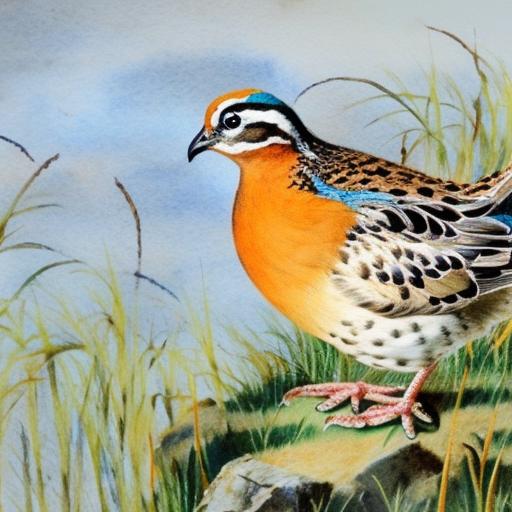Breeding ratios are a crucial aspect of quail farming and play a significant role in the overall health and productivity of the population. The breeding ratio refers to the number of male and female quails in a breeding group, and it is essential to maintain the right balance to ensure successful reproduction and genetic diversity within the population. By understanding and implementing appropriate breeding ratios, quail farmers can optimize their breeding programs, improve the overall health of their flock, and ensure sustainable production for the long term.
Maintaining proper breeding ratios is essential for maximizing the reproductive potential of quails. When the ratio of males to females is balanced, it can lead to increased fertility rates and successful hatching of eggs. Additionally, maintaining the right breeding ratio can help prevent issues such as aggression and overbreeding within the flock, which can negatively impact the overall well-being of the birds. By carefully managing breeding ratios, quail farmers can create an environment that promotes natural mating behaviors and ensures the overall health and welfare of their birds.
Key Takeaways
- Understanding the importance of breeding ratios is crucial for maintaining a healthy and productive quail population.
- Factors to consider when determining breeding ratios include the age and health of the quail, as well as the desired production goals.
- The ideal breeding ratio for quail is typically one male to every three to five females, to ensure successful mating and egg production.
- Managing breeding ratios is essential for optimal health and productivity, and involves monitoring and adjusting ratios as needed.
- Breeding ratios play a key role in maintaining genetic diversity within the quail population, which is important for overall sustainability.
Factors to Consider When Determining Breeding Ratios
Several factors should be taken into consideration when determining the appropriate breeding ratios for quails. One of the most critical factors is the age and health of the birds. Older or unhealthy birds may have reduced fertility rates, so it is essential to adjust the breeding ratios accordingly to maximize reproductive success. Additionally, the breed of quail being raised can also impact the ideal breeding ratio, as different breeds may have varying reproductive behaviors and requirements.
The size of the breeding space and the availability of nesting areas should also be considered when determining breeding ratios. Overcrowding can lead to stress and aggression among quails, so it is crucial to ensure that there is enough space for all birds to exhibit natural mating behaviors without competition. Furthermore, providing adequate nesting areas can help facilitate successful egg laying and incubation, contributing to overall reproductive success. Finally, the goals of the breeding program, whether it be for meat production or egg laying, will also influence the ideal breeding ratios. For example, a farm focused on meat production may prioritize larger breeding groups to maximize productivity, while a farm focused on egg production may prioritize smaller, more controlled breeding groups.
The Ideal Breeding Ratio for Quail
The ideal breeding ratio for quails can vary depending on several factors, including the breed of quail, the goals of the breeding program, and the available resources. However, a commonly recommended breeding ratio for quails is one male to every three to five females. This ratio allows for natural mating behaviors to occur without excessive competition or aggression among males. Additionally, this ratio can help maximize fertility rates and ensure successful hatching of eggs.
For farms focused on meat production, a higher male to female ratio may be preferred to increase the overall productivity of the flock. In contrast, farms focused on egg production may opt for a lower male to female ratio to control breeding and ensure consistent egg production. Ultimately, the ideal breeding ratio for quails will depend on the specific needs and goals of the farm, as well as the resources available to support the breeding program.
Managing Breeding Ratios for Optimal Health and Productivity
Managing breeding ratios is essential for maintaining the optimal health and productivity of a quail population. By carefully monitoring and adjusting breeding ratios as needed, farmers can ensure that their birds are reproducing successfully without experiencing issues such as overbreeding or aggression. Regularly assessing the health and behavior of the birds can help farmers identify any imbalances in breeding ratios and make necessary adjustments to promote overall well-being.
In addition to monitoring breeding ratios, providing a suitable environment for natural mating behaviors is crucial for maintaining optimal health and productivity within a quail population. This includes ensuring that there is enough space for all birds to exhibit natural mating behaviors without competition or stress. Providing adequate nesting areas and maintaining a comfortable living environment can also contribute to successful reproduction and overall flock health.
Breeding Ratios and Genetic Diversity
Maintaining appropriate breeding ratios is essential for preserving genetic diversity within a quail population. By carefully managing male to female ratios, farmers can help prevent inbreeding and promote genetic variation within their flock. Inbreeding can lead to a higher risk of genetic disorders and reduced overall fitness within a population, so it is crucial to maintain diverse breeding groups to ensure the long-term health and sustainability of quail populations.
By maintaining diverse breeding groups, farmers can help preserve desirable traits within their quail population while minimizing the risk of genetic abnormalities. This can contribute to overall flock health and productivity, as well as support long-term sustainability within the farming operation. Additionally, maintaining genetic diversity within a quail population can help adapt to changing environmental conditions and potential disease outbreaks, ultimately contributing to the resilience of the population.
Challenges and Solutions in Maintaining Breeding Ratios

Maintaining appropriate breeding ratios can present several challenges for quail farmers, particularly as populations grow and change over time. One common challenge is managing aggression among males within a breeding group, which can lead to stress and reduced reproductive success among females. Providing enough space and resources for all birds to exhibit natural mating behaviors can help minimize aggression and promote overall well-being within the flock.
Another challenge in maintaining breeding ratios is ensuring that all birds have equal access to resources such as nesting areas and food. Competition for resources can lead to stress and reduced reproductive success among quails, so it is essential to provide enough resources for all birds within a breeding group. Additionally, regularly assessing the health and behavior of the birds can help farmers identify any imbalances in breeding ratios and make necessary adjustments to promote overall well-being.
The Impact of Breeding Ratios on Quail Population and Sustainability
The impact of breeding ratios on quail populations is significant, as it directly influences the overall health, productivity, and sustainability of the population. By maintaining appropriate breeding ratios, farmers can help ensure successful reproduction and genetic diversity within their flock, ultimately contributing to long-term sustainability within their farming operation. Properly managed breeding ratios can lead to increased fertility rates, successful hatching of eggs, and overall improved health and welfare of the birds.
Furthermore, maintaining diverse breeding groups can help preserve desirable traits within a quail population while minimizing the risk of genetic abnormalities. This can contribute to overall flock health and productivity, as well as support long-term sustainability within the farming operation. Ultimately, by carefully managing breeding ratios, farmers can help ensure the long-term health and productivity of their quail population while promoting genetic diversity and resilience within their flock.
If you’re interested in quail breeding ratios, you may also want to check out this informative article on converting a shed into a chicken coop at PoultryWizard. Understanding the space and environment needed for chickens can provide valuable insights into creating an optimal breeding ratio for quails as well.
FAQs
What is the ideal quail breeding ratio?
The ideal quail breeding ratio is generally considered to be one male to every three to five females. This ratio helps to ensure successful breeding and minimizes aggression among the males.
Why is the quail breeding ratio important?
The quail breeding ratio is important because it affects the success of breeding and the overall well-being of the quail flock. A proper ratio can help to minimize aggression and stress among the birds, leading to healthier and more successful breeding outcomes.
What happens if the quail breeding ratio is not balanced?
If the quail breeding ratio is not balanced, there may be increased aggression among the males, leading to stress and potential injury among the birds. Additionally, an unbalanced ratio may result in lower breeding success and overall productivity of the flock.
How can I determine the gender of my quail?
Quail gender can be determined by examining physical characteristics such as plumage color, size, and behavior. In some species, males have more distinct markings and a larger size compared to females. Additionally, males may exhibit more vocalization and aggressive behavior during breeding season.
Are there any specific considerations for different quail species when it comes to breeding ratios?
Yes, different quail species may have specific breeding ratio requirements based on their natural behavior and social structure. It is important to research the specific needs of the quail species you are breeding to ensure the appropriate breeding ratio is maintained.
Meet Walter, the feathered-friend fanatic of Florida! Nestled in the sunshine state, Walter struts through life with his feathered companions, clucking his way to happiness. With a coop that’s fancier than a five-star hotel, he’s the Don Juan of the chicken world. When he’s not teaching his hens to do the cha-cha, you’ll find him in a heated debate with his prized rooster, Sir Clucks-a-Lot. Walter’s poultry passion is no yolk; he’s the sunny-side-up guy you never knew you needed in your flock of friends!







